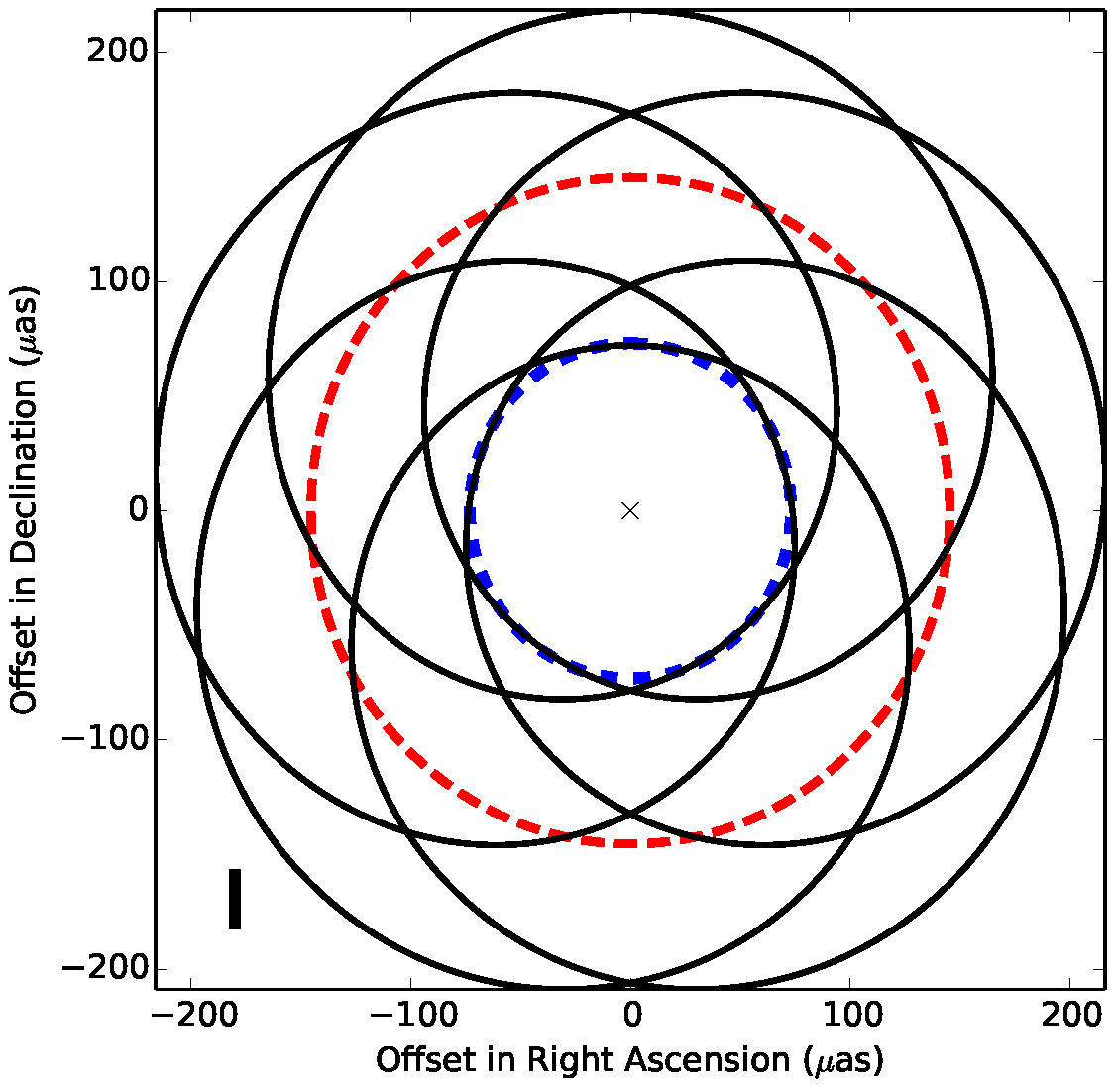IoW_20150204 - Gaia
Image of the Week |
||
Gaia's potential for the discovery of circumbinary planets |
||
| For bright stars, the astrometric precision of Gaia is sufficient to discover giant extrasolar planets by monitoring the stellar reflex motion. Because Gaia observes the entire sky and planets are abundant, thousands of exoplanets are expected to be discovered around single stars. Only recently, data of the Kepler satellite confirmed that exoplanets orbiting binary stars, so-called circumbinary planets, are also fairly common and that at least 10% of tight binary stars host one. A paper just published in MNRAS studies the potential of Gaia to characterise circumbinary planets. | ||
|
The figure above shows the astrometric signature in the plane of the sky of a circumbinary planet that Gaia could detect. In addition to proper and parallactic motion (not shown here), the photocentre of a binary composed of two very similar Sun-like stars located at a distance of 50 pc follows the red dashed curve with a period of 40 days. The planet has 8 times the mass of Jupiter and induces the orbital motion indicated by the blue dashed line. The rosette shape of the combined motion (solid curve) is caused by the period ratio of the planetary and binary orbits, which has to be larger than 4.5 for the system to be dynamically stable and was set to 6 in this simulated case (the planet's period is therefore 240 days). The vertical bar in the lower left-hand corner indicates the single-measurement uncertainty of Gaia of about 30 micro-arcseconds for bright stars. Because Gaia will accumulate on average 70 measurements for such systems, the circumbinary planet will therefore be detectable despite the complexity of the astrometric signal. |
||
|
credits: Johannes Sahlmann [Published: 04/02/2015] |
- Removed a total of (5) style text-align:center;
- Removed a total of (3) style text-align:justify;
- Removed a total of (1) border attribute.
- Removed a total of (1) cellpadding attribute.
- Removed a total of (1) cellspacing attribute.
Image of the Week Archive
- Removed a total of (1) border attribute.
- Removed a total of (1) cellpadding attribute.
- Removed a total of (1) cellspacing attribute.








































 Sign in
Sign in
 Science & Technology
Science & Technology

